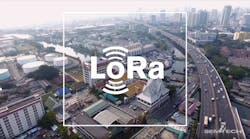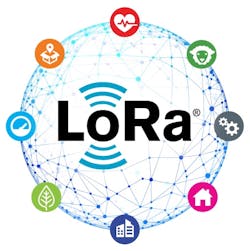How LoRa technology is making cities smarter
The Internet of Things (IoT) is a game changer for people and enterprises as myriads of physical devices, vehicles, and other items actively transmit volumes of data. IoT is becoming widespread as the world begins to embrace the big data revolution and a new utility of information for modern enterprise.
Specifically, the transmission of data in this uber-connected network will rely on technology that enables a wide reach with low power consumption. One such technology used in IoT networks is LoRa devices and wireless radio frequency technology (LoRa Technology), a long-range, low-power wireless radio frequency (RF) platform. Joining a multitude of devices in network—sensors, gateways, machines, devices, and even animals—it helps connect these items to the Internet from afar using minimal power.
The system cities choose to use for communication is crucial to the long-term affordability of an IoT system. While many organizations are focusing on 5G availability, LoRa Technology is already enabling companies and the planet to become smarter and more efficient now. The scale and scope of long-range LoRa wireless communication is being used to deliver real-time metrics combined with low installation and operational cost around the world.
As an easy and proven alternative to current wireless communication networks, LoRaWAN protocol delivers superior penetration in dense urban areas and a longer distance in non-urban areas. Added to the competitive operational cost and extended lifetime of the sensor batteries, this technology reduces energy consumption and contributes to a lower maintenance cost.
Installed in a new build or retrofitted to an existing facility, the long range of a LoRa-based communication platform provides greater coverage and penetration than alternative wireless technologies.
One of the most frequent use cases is to use LoRa to monitor and minimize peak energy consumption throughout an entire building by adding sensors to thermostats, outlets and other devices. This allows lights, water heaters, drink dispensers and air conditioners to be remotely turned on or off, or to be controlled on a prefixed, energy-saving schedule.
For smart vehicles, the flexibility and energy-efficiency of LoRa Technology is also advancing applications such as car parking and fleet tracking. Used in a car-parking application, the technology can enable a smart city to combine parking meters based on credit cards with remote monitoring via a mobile app. This allows field-based attendants to pinpoint specific vehicles which need to be ticketed, rather than manually checking every vehicle.
The real-time metrics LoRa Technology offers allows for the ability to schedule tasks to be performed during low-cost periods which contribute to a reduction in energy consumption.
Even though the installation costs for the technology are low, companies and countries can gain knowledge and experience from the open and non-profit LoRa Alliance. The alliance has grown to 500 company members since its inception in 2015 and delivers the expertise to help companies and governments to implement interoperable LoRa Technology.
Easy installation is teamed with the affordable operation of advanced technology. But perhaps the most important driver is LoRa Technology capability to deliver more functionality and efficiency for many industries, across the globe.
This is just the beginning for LoRa and I encourage you all the witness the power of its offering. We’ve already connected several cities such as Calgary and will have continued saturation into 2019.
To learn more about Semtech and LoRa, visit https://www.semtech.com



